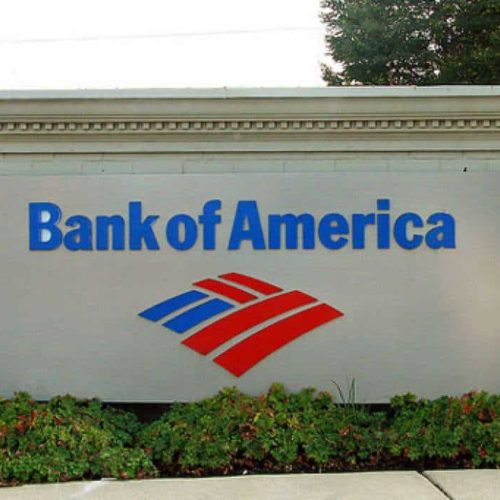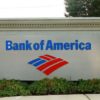Introduction
PHILADELPHIA — In the summer of 2006, Bank of America Corp. was under pressure to improve its defenses against money laundering.
Manhattan District Attorney Robert Morgenthau was probing evidence that Brazilian money launderers had moved $3 billion through a single Bank of America office in New York. A U.S. Senate panel, meanwhile, was preparing a report on offshore tax havens concluding that the bank had turned a blind eye to suspicious transfers of cash by two billionaire customers.
One of the bank’s moves amid the official push was to develop a computer program that would red-flag questionable movements of money. Bank executives were so excited by the “cutting-edge” quality of the prototype they discussed seeking a patent.
So it came as a surprise to Bucky Feagans, a top executive in charge of risk technology at the bank, when one of his computer gurus e-mailed that something was amiss with the project. Boris Galinsky wrote that the team developing the surveillance program was making “one wrong decision after another.” Galinsky, a senior vice president who was doing much of the technical heavy lifting on the project, said he was being asked “to develop crap.”
In what has become a four-year legal battle, Galinksy claims that executives ignored his concerns that the bank was developing a computer program that would do little to sniff out money launderers. “The whole idea,” he says, “was to declare victory. To say: ‘We did it!’” When he didn’t fall in line, he says, management branded him as a troublemaker and eventually fired him.
Bank officials say the computer program was a success, and that it does what it’s supposed to as part of the bank’s overall anti-money-laundering strategy. “We had a very good team, and we did lots of great work,” Feagans says. The bank says Galinsky was terminated because, among other issues, he secretly taped conversations with managers and made wild accusations against his co-workers.
Those two competing accounts were laid out in January in a Philadelphia courtroom before administrative law judge Ralph Romano. The judge is expected to issue a written ruling in several weeks to decide Galinsky’s claim that Bank of America violated the whistleblower protections in the 2002 Sarbanes-Oxley corporate reform law.
The dispute isn’t a high-profile case for the bank — Galinsky is acting as his own attorney, fighting an uphill battle against top-flight attorneys who specialize in defending companies in labor cases.
It’s one unpublicized example, though, of the myriad of legal challenges, big and small, that the nation’s largest bank is facing.
Some are connected to its acquisition of Countrywide Financial Inc., the largest U.S. mortgage lender, at the height of the financial crisis in late 2008. Last June, Bank of America agreed to pay $108 million to settle charges that loan-servicing operations it acquired with Countrywide had gouged homeowners with illegal fees.
The bank has also come under scrutiny by state attorneys general who are investigating whether Bank of America, J.P. Morgan Chase and other institutions have engaged in questionable foreclosure practices. A Bank of America spokeswoman has said that the bank is working with the states “to arrive at an industry-wide, multistate resolution.”
One year ago, then-New York Attorney General Andrew Cuomo charged Bank of America and former chief executive Ken Lewis with misleading shareholders and the federal government in order to complete the bank’s takeover of Merrill Lynch. The lawsuit, which resulted from a joint investigation with the special inspector general for the federal bailout program, claims bank officials hid massive losses at Merrill from shareholders and then squeezed taxpayer cash out of the federal government by falsely claiming they would back out of the deal without bailout money. Attorneys for Lewis have called the suit “implausible” and “inconsistent.”
Meanwhile, Bank of America is believed to be the next target of WikiLeaks. The group’s founder, Julian Assange, told Forbes several weeks ago that he had a trove of secret documents from a major U.S. bank and was preparing to release them. The bank saw its share price fall on the news and assembled a team to examine thousands of documents in the event that they become public.
In the fourth quarter of 2010, Bank of America set aside $1.5 billion for legal expenses and took a $4.1 billion charge to cover disputes over mortgages, including its recent $2.8 billion settlement with Fannie Mae and Freddie Mac.
‘Hot Project’
Galinsky filed the first in a series of Sarbanes-Oxley complaints with the U.S. Department of Labor in January 2007. The bank fired him in April 2008.
The Labor Department, which is responsible for enforcing an array of whistleblower laws, rejected Galinsky’s claim for whistleblower protection. That’s not unusual — as the Center for Public Integrity reported last year, the agency upheld just over 2 percent of Sarbanes-Oxley whistleblower claims between the law’s passage in 2002 and last June 30.
After a series of appeals and fits and starts in the process, Galinsky is now hoping that Judge Romano will rule in his favor and award him back pay as well as bonuses he claims he was unfairly denied.
His problems began in 2006, after he volunteered to work on a statistical modeling program that would sift millions of transactions and try to identify possible money launderers. The idea was to look for suspect clusters of money transfers and other red flags, such as cash coming from countries designated as high-risk areas for corruption or terrorism.
Galinsky’s job was to translate the computer language used in the prototype to Java so the program could be used widely by bank employees involved in compliance and investigations. By June of 2006, Galinsky testified, he’d become concerned about the design of the program. He sent higher ups a series of e-mails describing a “push to lower standards on the project” by creating oversimplified, “inflexible” applications.
Months later, he received a below-standard performance review — management said his communications and teamwork skills were lacking. He was denied a bonus for the year.
He continued to raise questions about the computer program, writing in one e-mail that the project could amount to “fraud because the company is getting lousy non-working product/service, but management claims success and is rewarded. … The bank is dealing with billions and billions of dollars. The potential for loss is huge.”
‘Broken Bodies’
Others were also raising concerns about the effectiveness of the bank’s anti-money-laundering controls.
In August 2006, the U.S. Senate Homeland Security Subcommittee on Investigations reported that the bank had allowed two wealthy entrepreneurs, brothers Samuel and Charles Wyly, to avoid Internal Revenue Service scrutiny by funneling money into the bank through offshore entities. (In 2010, the Securities and Exchange Commission charged the brothers with a $550 million securities fraud. The Wylys deny wrongdoing.)
In September 2006, Manhattan District Attorney Robert Morgenthau announced that his investigation showed Bank of America had allowed over $3 billion in cash from illegal Brazilian “money service operations” to flow through the bank, mostly via offshore shell companies chartered in Panama and the British Virgin Islands.
The bank acknowledged missteps in both cases, but a spokeswoman noted the bank cooperated fully with both investigations. It paid $10.5 million to Morgenthau’s office and the National Association of Securities Dealers to settle allegations it violated anti-money-laundering rules.
Galinsky testified at the January hearing that the bank was also under pressure at the time from banking regulators to show evidence that it had improved its capability to block money launderers. In his view, management wanted him to be “politically correct” and say only “positive” things about the computer project.
In their cross-examination of Galinsky, the bank’s lawyers suggested that he’d been confrontational and bombastic, more interested in complaining than working out problems with coworkers. On the witness stand, Galinsky, who immigrated to the United States from the Soviet Union in 1979, showed his penchant for blunt talk, comparing the bank’s hierarchy to the Communist Party and observing that one bank executive reminded him of a KGB official.
Feagans, the bank risk technology executive, testified that the bank tried to use the dust-up over the computer program as a “coaching opportunity” to help Galinsky develop a more collaborative working style. Even if employees get results in their jobs, Feagan said, “we don’t want people … leaving broken bodies and glass behind them.”
‘Our Capabilities are Strong’
Asked about Galinsky’s claim against the bank, a Bank of America spokeswoman, Shirley Norton, said “we can’t comment except to say that it is without merit.”
Norton added that the bank “takes its anti-money laundering responsibilities very seriously.” She said the bank “has nearly 300 experienced employees dedicated solely to money laundering and terrorist financing risk management. … We have spent tens of millions of dollars on sophisticated systems and processes over the past few years to ensure our detection, surveillance and analytic capabilities are strong.”
The bank has not escaped continuing questions, though, about how well its anti-money-laundering controls work.
One year ago, the Senate Homeland Security Subcommittee on Investigations concluded that Bank of America and other banks had ignored money laundering controls as they shuffled hundreds of millions of dollars on behalf of African politicians and their associates. In testimony before the panel, a Bank of America executive conceded that the bank had allowed an Algerian, Pierre Falcone, to maintain numerous accounts from 1989 to 2007 despite media accounts that he was a billionaire arms dealer under criminal prosecution in France since 2000. (The Center’s International Consortium of Investigative Journalists reported on Falcone in 2002.)
In June, Bloomberg News reported that drug traffickers had “used accounts at Bank of America in Oklahoma City to buy three planes that carried 10 tons of cocaine, according to Mexican court filings. Federal agents caught people who work for Mexican cartels depositing illicit funds in Bank of America accounts in Atlanta, Chicago and Brownsville, Texas, from 2002 to 2009.”
Norton, the bank spokeswoman, said Bank of America cooperated with investigations of the cartels and “provided key information to law enforcement to help them develop their cases. We have not been charged with any wrongdoing.”
Michael Hudson is a staff writer with the Center for Public Integrity and author of The Monster: How a Gang of Predatory Lenders and Wall Street Bankers Fleeced America — and Spawned a Global Crisis.



Join the conversation
Show Comments